
Exploring the Landscape of Steel Buildings: Types and Diverse Uses
Steel, known for its strength, durability, and versatility, has become a favored material in the construction industry. Modern steel buildings are not just about warehouses or industrial hangars anymore; they’ve evolved to suit a myriad of purposes, from commercial spaces to residential abodes. Let’s explore the various types of steel buildings and their wide-ranging applications.
COMPARE QUOTES1. Pre-engineered Steel Buildings
Definition: Pre-engineered buildings are factory-made structures with predetermined measurements. Once manufactured, they are shipped to the site for assembly.
Uses:
- Warehouses
- Workshops
- Factories
- Storage units
2. Structural Steel Buildings
Definition: This type emphasizes the strength of the structure. Heavy steel columns, beams, and trusses are used, making it suitable for large constructions.
Uses:
- Skyscrapers
- Sports arenas
- Large commercial buildings
3. Light Gauge Steel Buildings
Definition: Light gauge steel buildings utilize thin sheets of steel that are bent into shape to form C-sections or Z-sections. It’s a more lightweight construction method.
Uses:
- Residential homes
- Small offices
- Temporary structures, like site offices
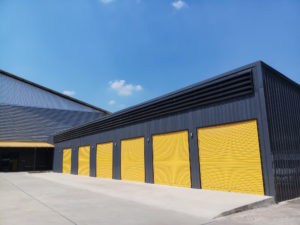
4. Modular Steel Buildings
Definition: Modular buildings consist of multiple modules or sections manufactured off-site. These modules are then transported and assembled on-site.
Uses:
- Temporary office spaces
- Classroom extensions for schools
- Medical clinics
5. Steel Arch Buildings
Definition: These buildings have an arched design, created by curved steel panels. They’re self-supporting, eliminating the need for beams or trusses.
Uses:
- Agricultural storage
- Aircraft hangars
- Warehouses
6. Hybrid Steel Buildings
Definition: A hybrid structure combines steel with other materials, such as wood or concrete, to utilize the strengths of each material.
Uses:
- Residential homes
- Multi-purpose commercial spaces
- Recreational facilities
Advantages of Steel Buildings
Steel buildings offer myriad benefits, which make them suitable for diverse applications:
- Durability: Steel, being resistant to pests, mold, and rot, promises longevity.
- Cost-Effective: Over the building’s lifecycle, maintenance costs for steel buildings remain relatively low.
- Sustainability: Steel is recyclable, making these buildings environmentally friendly.
- Flexibility: Steel buildings can be easily modified or expanded based on changing requirements.
- Safety: Being fire-resistant and able to withstand natural calamities better than some other materials, steel buildings offer enhanced safety.
The world of steel buildings is vast and varied. Their inherent strengths, combined with flexibility in design and construction, mean they can cater to almost any purpose. Whether you’re looking to build a new home, expand your school, or set up a large commercial space, there’s likely a steel building solution that fits the bill.
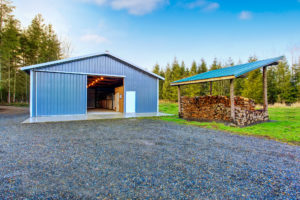
Metal Buildings vs. Traditional Buildings: A Comparative Analysis
When considering a construction project, it’s crucial to weigh the pros and cons of the materials involved. Metal, predominantly steel, has emerged as a strong contender against traditional building materials like wood, brick, and concrete. Let’s delve deeper into how metal buildings stack up against traditional ones in terms of cost, longevity, and environmental impact.
Cost-Effectiveness: Getting the Most Bang for Your Buck
Metal Buildings: The cost of erecting a metal building can range between $16 to $20 per square foot for basic structures. However, for more intricate designs or customized buildings, prices might escalate to $40 or even higher per square foot. One of the major cost advantages of metal buildings is that they often come in pre-engineered kits, which can reduce labor costs significantly.
Traditional Buildings: On average, traditional building materials like wood can cost anywhere from $20 to $100 per square foot, depending on factors like the type of wood, design intricacies, and location. Concrete and brick constructions generally hover around the $25 to $50 per square foot mark.
While the upfront costs of metal buildings can sometimes be similar to or slightly higher than traditional materials, the reduced labor expenses and lower maintenance costs over time often make metal constructions more cost-effective in the long run.
COMPARE QUOTESLongevity: Built to Last
Metal Buildings: One of the most significant advantages of metal buildings is their durability. Steel, in particular, is resistant to pests, molds, and rot. With proper maintenance, a metal building can last several decades, with many structures having a lifespan of 40-70 years.
Traditional Buildings: The lifespan of traditional buildings varies depending on the material. While brick and concrete structures can last upwards of a century, wooden buildings, especially in damp conditions, may face issues like termites and decay, which can reduce their longevity.
Both metal and traditional buildings can have long lifespans, but metal buildings, especially in areas prone to pests or humidity, might offer a more extended period of hassle-free existence.
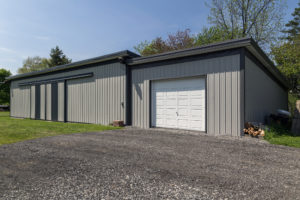
Environmental Impact: Towards a Greener Future
Metal Buildings: Steel’s recyclability makes metal buildings a sustainable choice. The majority of steel used in construction today is recycled, and it can be repurposed at the end of a building’s life without degradation. Moreover, metal buildings are often more energy-efficient, especially when combined with proper insulation, leading to reduced energy bills.
Traditional Buildings: While materials like brick and concrete are incredibly durable, they have a larger carbon footprint in terms of production. Wood, though renewable, leads to deforestation concerns, and its treatment with chemicals can pose environmental issues.
Metal buildings, with their recyclability and energy efficiency, arguably present a more eco-friendly option compared to some traditional building materials.
Both metal and traditional buildings have their place in the construction landscape, each offering unique advantages. However, with the push towards sustainability, cost-effectiveness, and longevity, metal buildings are gaining rapid popularity. As always, considering the specific needs and constraints of your project will help determine the best choice for your construction endeavors.
COMPARE QUOTESCommon Steel Building Sizes and Their Ideal Uses
The versatility of steel buildings is evident not just in their applications but also in the variety of sizes available. Depending on the purpose, steel buildings can range from small sheds to massive steel warehouses. Let’s explore some standard steel building sizes and what they might be ideally used for.
1. Small Steel Buildings (10×10 to 20×20 feet)
These compact steel structures are perfect for personal or limited commercial use.
Uses Include:
- Personal Storage: Ideal for storing garden tools, seasonal items, or hobby-related equipment.
- Workshops: A personal space for DIY projects or small-scale crafts.
- Home Offices: With the increasing trend of working from home, these can serve as detached office spaces offering quiet and separation from household distractions.
2. Medium-sized Steel Buildings (30×40 to 40×60 feet)
Offering more space, these structures are suitable for larger commercial operations or specialized needs.
Uses Include:
- Garages: Space for multiple vehicles, maintenance areas, or even vehicle-related businesses.
- Retail Outlets: Perfect for businesses that require a showroom and storage in the same facility.
- Recreational Areas: These can house indoor sports courts, gymnasiums, or community centers.
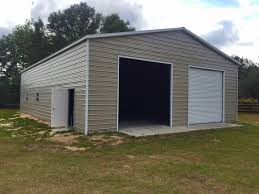
3. Large Steel Buildings (50×100 feet and above)
These expansive structures are best suited for significant commercial or industrial operations.
Uses Include:
- Warehouses: Ideal for businesses needing vast storage space with easy access for trucks and loading.
- Manufacturing Facilities: These buildings offer ample space for machinery, production lines, and storage.
- Agricultural Uses: They can serve as barns, storage for large equipment, or livestock shelters.
- Aircraft Hangars: Given the sizable space requirements for aircraft, these buildings provide the perfect solution.
4. Custom-sized Steel Buildings
For unique requirements, steel buildings can be custom-sized, ensuring every need, no matter how specific, is catered to.
Uses Include:
- Specialized Storage: For items like boats, RVs, or specific machinery.
- Event Spaces: Custom-sized steel buildings can cater to events, offering spaces for concerts, exhibitions, or even weddings.
- Sports Arenas: For sports that require specialized dimensions or facilities.
While these are standard sizes and their general uses, the beauty of steel buildings lies in their adaptability. Whether you need an additional door for accessibility, an open floor plan, or heightened ceilings, steel buildings can be tailored to fit. Always consider the present and future requirements when choosing the size, as expanding or modifying later might incur additional costs.
COMPARE QUOTESAdvancements in Steel Building Techniques
The construction industry has seen significant advancements over the years, and the evolution of steel building techniques stands as a testament to this progress. As demands for quicker, more efficient, and sustainable construction methods have risen, the steel industry has responded with innovations that have revolutionized the way we think about and utilize steel structures.
Pioneering Prefabrication
One of the most impactful advancements in steel building is the shift towards prefabrication. By pre-assembling parts or entire sections of a building in a factory setting, builders can ensure tighter quality control, reduced waste, and faster on-site assembly. This method not only speeds up the construction timeline but also reduces the chances of on-site errors and rework.
Galvanized Steel and Corrosion Resistance
The introduction of galvanized steel marked a major step forward in prolonging the lifespan of steel buildings. By coating steel components with a protective layer of zinc, galvanized steel provides a robust shield against rust and corrosion. This has been especially beneficial in environments with high humidity or exposure to corrosive agents, ensuring that the structures remain durable for years.
3D Modeling and Computer-aided Design (CAD)
With the integration of technology into construction processes, 3D modeling and CAD have become indispensable tools. These technologies allow architects and engineers to visualize, design, and modify steel structures with high precision. This level of detailed planning minimizes mistakes, optimizes material usage, and ensures that the end product aligns perfectly with the client’s vision.
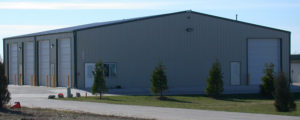
Quenching and Tempering
By adopting advanced metallurgical processes like quenching (rapid cooling) followed by tempering (controlled reheating), steel manufacturers have been able to produce steel that has a fine-grained and hardened structure. This results in steel that is both stronger and more ductile, making it suitable for high-stress applications without compromising its ability to withstand deformations.
Sustainable and Eco-friendly Solutions
The steel industry has been proactive in aligning with global sustainability goals. Modern steel buildings are designed with energy efficiency in mind, incorporating features that reduce heat loss and optimize light penetration. Moreover, steel is endlessly recyclable without any degradation in quality, making it a green material of choice for many builders.
COMPARE QUOTESIncorporating Smart Technologies
The integration of smart technologies into steel buildings is an emerging trend. From sensors that monitor structural health to automated HVAC systems that adapt to the building’s occupancy patterns, the possibilities are endless. These innovations not only enhance the functionality and comfort of steel buildings but also pave the way for futuristic, tech-driven infrastructure.
The advancements in steel building techniques have not only improved the efficiency and durability of the structures but have also opened up a realm of possibilities in design and functionality. With continuous research and development in this domain, the future of steel buildings promises even more innovations that will redefine the limits of construction.
Steel Building Insulation Options
Insulation is an essential component of any building structure, and when it comes to steel buildings, it becomes even more pivotal. Proper insulation ensures that the building remains energy-efficient, controls internal temperatures, prevents condensation, and enhances acoustic performance. Given the unique characteristics of steel as a building material, let’s delve into the insulation options best suited for these structures.
Batt and Blanket Insulation
One of the most commonly used insulation methods for steel buildings is batt and blanket insulation. Made predominantly from fiberglass, this type of insulation comes in rolls or batts. It’s a cost-effective method and is typically sandwiched between the steel wall and the interior wall, providing a layer of thermal resistance.
Spray Foam Insulation
Spray foam insulation offers an excellent solution for steel structures due to its ability to fill gaps, crevices, and hard-to-reach places. When sprayed, the foam expands and hardens, creating an airtight seal. This not only provides superb thermal insulation but also acts as a barrier against moisture, reducing the risk of rust and corrosion. There are two primary types of spray foam: open-cell (more flexible and expansive) and closed-cell (denser and more resistant to water penetration).
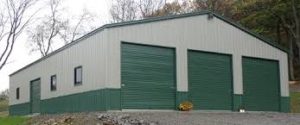
Rigid Board Insulation
Perfect for roofs and walls of steel buildings, rigid board insulation is composed of materials like polyisocyanurate, polystyrene, or polyurethane. These boards offer high R-values (a measure of insulation’s thermal resistance) and can be tailored to meet specific thickness requirements. Additionally, they’re fire-resistant and ideal for structures demanding a high thermal performance.
Reflective or Radiant Barrier Insulation
Reflective insulation, commonly known as a radiant barrier, is particularly effective in regions with high temperatures. Made from reflective aluminum foil, this insulation type reflects radiant heat, preventing it from entering the building, especially during hot days. It’s usually installed over the roof or along the walls, ensuring that the shiny surface faces the open air or the adjacent living space.
Insulated Metal Panels (IMPs)
Insulated Metal Panels are a revolutionary way of incorporating insulation and steel wall cladding into a single product. These panels consist of an insulating foam core sandwiched between two metal skins. They’re factory-made, ensuring consistent quality, and can be quickly installed. IMPs not only provide excellent thermal resistance but also enhance the building’s aesthetic appeal.
COMPARE QUOTESConsiderations for Insulation
When selecting insulation for a steel building, it’s vital to consider factors like climate, building usage, and budget. A warehouse in a mild climate might require different insulation compared to a steel-framed office building in an area with extreme temperatures. Additionally, it’s essential to ensure proper installation of the insulation to prevent gaps and seams, which could lead to energy losses.
Incorporating the right insulation for steel buildings is not just about temperature control. It’s also about creating a comfortable environment, optimizing energy usage, and ensuring the longevity of the structure by protecting it from potential condensation and rust. With a myriad of options available, builders and owners can find an insulation solution that aligns perfectly with their needs and enhances the functionality of their steel building.
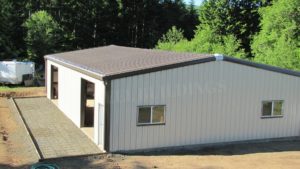
Maintenance and Upkeep of Steel Buildings
Steel buildings have been hailed for their durability, strength, and longevity. Yet, like all structures, they benefit from regular maintenance and care. Proper upkeep not only ensures the aesthetic appeal of the building remains intact but also extends its life and maintains its structural integrity. Let’s explore the essentials of maintaining and prolonging the lifespan of steel structures.
Rust Prevention
While modern steel structures often come with corrosion-resistant coatings, over time and under certain environmental conditions, there can still be a risk of rusting. To combat this:
- Regular Inspections: Periodically check for signs of rust, especially in areas where water tends to accumulate or where the structure may have been damaged.
- Prompt Action: If rust spots are detected, address them immediately by cleaning the area and applying rust-inhibiting paint or other protective coatings.
- Ensure Proper Drainage: Water accumulation is a leading cause of rust in steel buildings. Ensure that the site has proper drainage, and the building’s design doesn’t allow water to pool.
Repainting
The paint on a steel building does more than just add aesthetic value; it serves as a protective layer against environmental elements.
- Routine Checks: Over time, paint can chip, fade, or peel. Regularly inspect the building for any signs of wear in the paint.
- Preparation: Before repainting, it’s essential to properly prep the surface. This may involve removing any old, peeling paint, cleaning the surface, and priming it for the new coat.
- Choosing the Right Paint: Opt for paints designed specifically for steel or metal structures. These paints often come with added protective qualities against UV rays, moisture, and temperature changes.
Addressing Wear and Tear
Steel buildings, especially those in commercial or industrial settings, can undergo significant wear and tear.
- Protect High-Traffic Zones: Areas frequently accessed or used might show signs of wear faster. Consider using protective barriers, reinforced steel sections, or additional protective mats or paints in these zones.
- Regular Cleaning: Dirt, grime, and chemical residues can affect the appearance and integrity of steel. Periodic cleaning, especially in industrial settings, can help prevent long-term issues.
- Check Structural Components: Periodically, especially after extreme weather conditions, inspect the building for any signs of structural issues. This includes checking bolts, screws, and other fixtures to ensure they’re tight and in good condition.
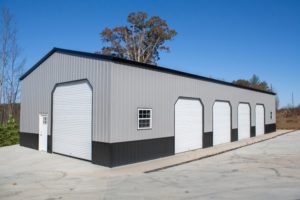
Roof and Foundation Checks
The roof and foundation play crucial roles in protecting the entire structure. Regularly inspect the roof for leaks, ponding, or damage. For the foundation, check for any signs of settling, cracking, or water damage. Addressing problems in these areas early can prevent more significant issues down the road.
While steel buildings are inherently robust and durable, regular maintenance is the key to ensuring they remain in top condition for years to come. Through vigilant inspections, timely repairs, and a proactive approach to care, owners can maximize their investment and enjoy the benefits of their steel structure for decades.
Breaking Down Customization and Aesthetics of Steel Buildings
In the world of construction, steel buildings have firmly rooted themselves as resilient, efficient, and versatile options. But beyond their robust nature, steel buildings have another often overlooked advantage: their incredible potential for customization and aesthetic enhancement. The malleability and strength of steel enable architects and builders to push the boundaries of design, making it possible to craft spaces that are as unique as they are sturdy.
Beyond The Silver Shine
When one thinks of steel buildings, it might be easy to imagine simple, silver-colored, boxy structures. However, modern technology and design practices have transformed the steel building industry, allowing for a plethora of exterior finishes.
- Colors and Paints: Gone are the days when steel structures had a monotonous industrial look. Today’s steel buildings can be painted in a wide range of colors, allowing them to complement their environment or even make a vibrant statement.
- Façade Options: Steel buildings can be fitted with various façades, from brick and wood to modern composite materials, providing a versatile look that can mimic traditional construction or embrace a contemporary aesthetic.
Flexible Designs and Structures
Steel’s strength-to-weight ratio is unmatched. This means designs that might be challenging or even impossible with other materials become feasible with steel.
- Open Floor Plans: Thanks to the structural capabilities of steel, it’s possible to have vast open spaces without the need for intermediary columns or supports. This is particularly beneficial for spaces like showrooms, warehouses, or auditoriums.
- Unique Architectural Features: Steel’s versatility means that architects can introduce unique design elements, from cantilevered sections to intricate latticework or even expansive glass facades supported by slender steel columns.
Environment and Landscape Blending
In natural or scenic surroundings, there might be a desire for buildings to blend seamlessly into the environment.
- Green Roofs: Steel buildings can support green or “living” roofs, where vegetation can be grown on the rooftop. This not only enhances the building’s aesthetic but can also provide insulation and support biodiversity.
- Reflective Surfaces: Some modern steel structures incorporate reflective surfaces or materials that mirror the environment, allowing the building to subtly blend with its surroundings.
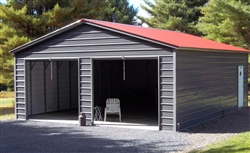
Personalized Interiors
While the exterior of a steel building can be a work of art in itself, the interiors too offer endless opportunities for customization.
- Custom Floor Layouts: Whether it’s for office spaces, manufacturing floors, or residential use, steel buildings can be partitioned and laid out to exact specifications.
- Ceiling and Lighting Options: With steel, there are opportunities to introduce high ceilings, skylights, or custom lighting setups, enhancing the ambience of the space.
Steel buildings, far from being just practical solutions, offer a canvas for creativity. Whether the aim is to stand out or blend in, steel provides the flexibility to dream big, offering a harmonious blend of form and function.
Steel vs. Other Metals in Construction
The choice of material plays a pivotal role in construction, greatly influencing the durability, cost, and sustainability of the project. While steel has been a stalwart in the building industry for decades, other metals like aluminum and titanium also bring unique attributes to the table. Let’s dive into a comparison of these metals to better understand their strengths and limitations in construction.
Steel
Pros:
- Strength: Steel boasts an excellent strength-to-weight ratio, making it ideal for skyscrapers, bridges, and other structures that need to withstand significant stress or weight.
- Affordability: When compared to other metals, steel is relatively inexpensive. Its cost-effectiveness is one of the reasons it’s so prevalent in construction.
- Ductility: Steel can be stretched or bent without breaking, allowing for more flexibility in design and a higher resistance to dynamic forces like earthquakes.
- Recyclability: Steel can be recycled almost indefinitely without losing its quality, making it a sustainable option in the long run.
Cons:
- Corrosion: Without proper treatment or coating, steel can be susceptible to rust when exposed to moisture.
- Weight: Though strong, steel is also heavy, which can sometimes limit its applications and increase transportation costs.
Aluminum
Pros:
- Lightweight: Aluminum is significantly lighter than steel, which can reduce transportation and construction costs.
- Corrosion Resistance: Aluminum naturally forms an oxide layer that protects it from corrosion, making it ideal for projects exposed to wet or saline conditions.
- Malleability: Aluminum can be easily molded and shaped, allowing for intricate and bespoke designs.
Cons:
- Strength: While sturdy, aluminum isn’t as strong as steel, potentially requiring thicker sections or reinforcements in load-bearing applications.
- Cost: High-quality aluminum can be more expensive than steel, which might inflate the overall project budget.
- Melting Point: Aluminum has a lower melting point than steel, making it less ideal for structures exposed to high temperatures.
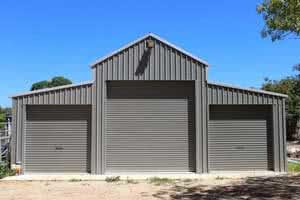
Titanium
Pros:
- Strength-to-Weight Ratio: Titanium is renowned for its impressive strength-to-weight ratio, often surpassing that of steel.
- Corrosion Resistance: Titanium is highly resistant to corrosion, even from saltwater or chlorine, making it perfect for marine or pool-related constructions.
- Biocompatibility: Titanium is non-toxic and can be used in projects where other metals might react or leach harmful substances.
Cons:
- Cost: Titanium is one of the most expensive metals, making it less feasible for large-scale projects or ones with tight budgets.
- Availability: Titanium isn’t as widely available as steel, potentially leading to longer lead times for sourcing and delivery.
- Specialized Workmanship: Working with titanium can require specialized tools and skills, which can be harder to find and more expensive.
While steel remains a versatile and cost-effective choice for a broad range of construction projects, both aluminum and titanium offer specialized benefits that can make them better suited for certain applications. The final decision should be based on the project’s specific requirements, budget, and desired longevity.
COMPARE QUOTES
Leave a Reply